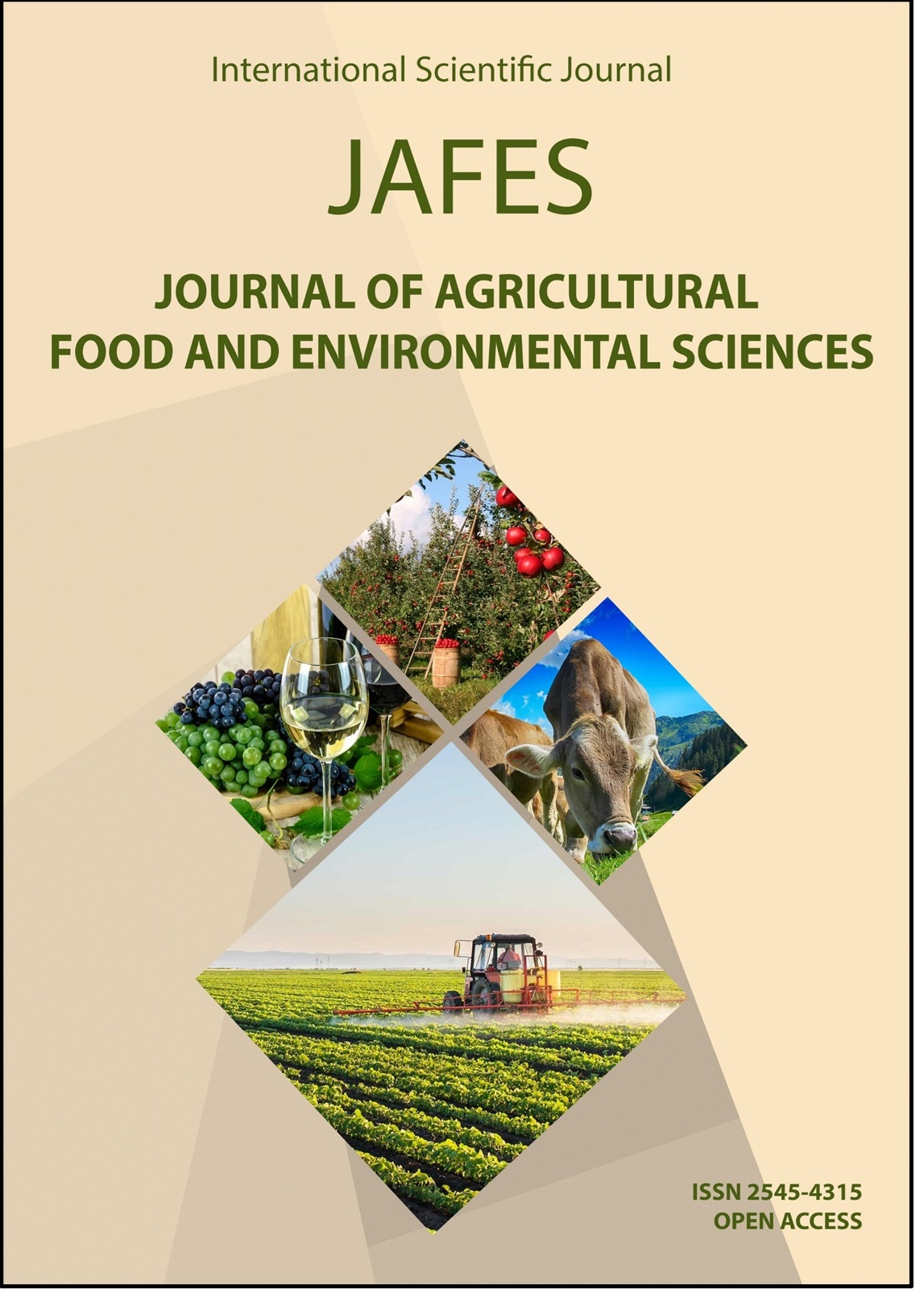POLLEN VIABILITY IN QUINCE CULTIVARS
Клучни зборови:
Cydonia oblonga, pollen staining, pollen germination in vitro, breeding.Апстракт
Pollen viability of eight quince cultivars (ʻLeskovackaʼ, ʻVranjskaʼ, ʻMoravaʼ, ʻPazardzijskaʼ, ʻHemusʼ, ʻAsenicaʼ, ʻPortugalʼ and ʻTriumphʼ), was studied in the two-year period (2011-2012). Testing of pollen viability was performed using two methods: the staining of pollen with acetocarmine (indirect method) and pollen germination in vitro with sucrose and agar-agar (direct method). Studied cultivars differed significantly in terms of pollen viability. The lowest percentage of stained pollen grains was detected in ʻLeskovackaʼ cultivar (70.29%) and the highest in the cultivars ʻAsenicaʼ, ʻHemusʼ and ʻTriumphʼ (over 90%). Similarly to that, the lowest percentage of pollen germination was obtained in ʻLeskovackaʼ cultivar (62.86%) and the highest in the cultivars ʻMoravaʼ, ʻAsenicaʼ, and ʻTriumphʼ (over 80%). With the exception of ʻPortugalʼ cultivar, the values of pollen viability determined by staining with acetocarmine were higher for 3-15% compared to the pollen germination in vitro. However, values obtained using these tho methods are highly positively correlated. On the basis of obtained results, the both methods can be recommended as reliable tests for pollen viability of quince, although priority should be given to the method of pollen germination in vitro, because it is more accurate. All tested cultivars are distinguished for high pollen viability, and can be successfully used as male parents in hybridization. In addition, they also can be recommended as a good pollenisers when are planting new quince orchards.
Референци
Chagas, E.A., Barbosa, W., Saito, A., Pio, R. and Feldberg, N.P. (2008). Temperature, pH and development period on in vitro pollen germination in Pyrus calleryana. Acta Horticulturae, 800: 521526.
Dalkiliç, Z. and Mеstаv, O. (2011). In vitro pollen quantity, viability and germination tests in quince. African Journal of Biotechnology, 10 (73): 16516-16520.
Gür, N. and Topdemir, A. (2008). Effects of some heavy metals on in vitro pollen germination and tube growth of apricot (Armeniaca vulgaris Lam.) and cherry (Cerasus avium L.). World Applied Sciences Journal, 4 (2): 195-198.
Kargar, M.H. and Imani, A. (2011). Effects of fungicides on pollen germination peach and nectarine in vitro. African Journal of Plant Science, 5: 643-647.
Khatun, S. and Flowers, T.J. (1995). The estimation of pollen viability in rice. Journal of Experimental Botany, 46 (1): 151-154.
Kidman, C.M., Dry, P.R., McCarthy, M.G., and Collins, C. (2014). Effect of rootstock on nutrition, pollination and fertilisation in 'Shiraz' (Vitis vinifera L.). Vitis, 53: 139-145.
Liu, L., Huang, L. and Li, Y. (2013). Influence of boric acid and sucrose on the germination and growth of areca pollen. American Journal of Plant Sciences, 4: 1669-1674.
Milatovic, D. and Nikolic, D. (2014). Uticaj temperature na klijavost polena i rast polenovih cevčica sorti višnje. Journal of Agricultural Sciences, 59: 45-52.
Pearson, H.M. (1984). Pollen viability in Rosa. HortScience, 19 (5): 710-711.
Pirlak, L. (2002). The effects of temperature on pollen germination and pollen tube growth of apricot and sweet cherry. Gartenbauwissenschaft, 67: 61-64.
Radovic, A., Nikolic, D., Milatovic, D. and Đurovic, D. (2016a). Uticaj temperature na klijavost polena i rast polenovih cevčica sorti kruške. Journal of Agricultural Sciences, 61 (4): 333-341 12. Radovic, A., Nikolic, D., Milatovic, D., Živkovic, B. and Stevanovic, N. (2016b). The effect of plant hormones on pollen germination and pollen tube growth of almond cultivars. Acta Horticulturae, 1139: 375-380.
Sorkheh, K., Shiran, B., Rouhi, V., Khodambashi, M., Wolukau, J.N., and Ercisli, S. (2011). Response of in vitro pollen germination and pollen tube growth of almond (Prunus dulcis Mill.) to temperature, polyamines and polyamine synthesis inhibitor. Biochemical Systematics and Ecology, 39: 749-757.
Sotomayor, C., Castro, J., Velasco, N., and Toro, R. (2012). Influence of seven growth regulators on fruit set, pollen germination and pollen tube growth of almonds. Journal of Agricultural Science and Technology B, 2: 1051-1056.
Stösser, R., Hartman, W., and Anvari, S.F. (1996). General aspects of pollination and fertilization of pome and stone fruit. Acta Horticulturae, 423: 15-22.



